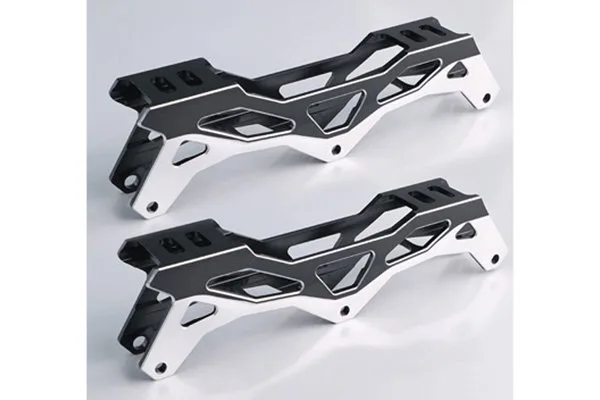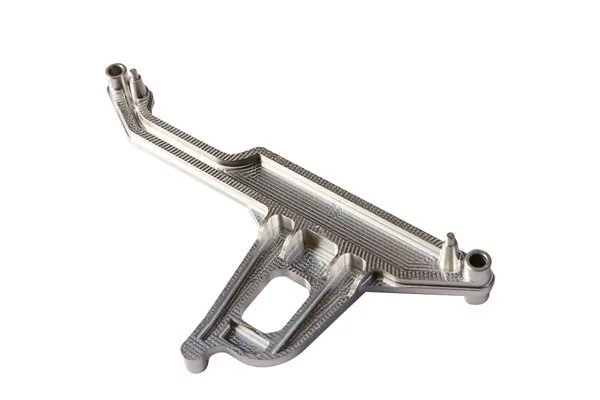: The Heart of Precision Engineering
In an age where technological advancements are driving unprecedented levels of production and efficiency, the world of CNC machining stands out as a pinnacle of precision engineering. At the core of this dynamic landscape lies one imperative question: how does CNC processing accuracy differ between various materials, particularly 304 stainless steel and 440C stainless steel? This intricately detailed exploration will guide you through the complexities of CNC machining, highlighting key considerations, advantages, and applications of both materials. Today, we will delve deep into this topic, arming you with the knowledge necessary to make informed decisions for your projects.
As a representative of YL Machining, we believe in empowering our clients and readers with insights drawn from industry practices backed by years of expertise. Our aim is to keep you engaged and informed, because understanding the nuances of material properties can infinitely elevate the quality of your machining outcomes. Join us as we unfold the layers of accuracy, corrosion resistance, and practical applications that define both 304 and 440C stainless steels in the realm of CNC processing.
—
Section 1: Understanding CNC Processing
1.1 What is CNC Machining?
Computer Numerical Control (CNC) machining is a subtractive manufacturing process where computer software dictates the movement of machinery and tools. This technology allows for an unparalleled level of automation and precision, making it a standard in modern manufacturing environments. CNC machining encompasses various processes, including milling, turning, grinding, and more. Throughout this article, we will focus on the intricacies of CNC processing as it pertains to stainless steel materials.
1.2 Importance of Material Selection in CNC Machining
The choice of material can significantly impact CNC machining outcomes. Various materials arrive with differing properties, affecting factors such as processing accuracy, tool wear, speed, and ultimately, the part’s functionality. Understanding the physical and mechanical traits of materials is vital for optimizing machining strategies and enhancing performance.
—
Section 2: A Dive into 304 and 440C Stainless Steel
2.1 Overview of 304 Stainless Steel
304 stainless steel is perhaps the most recognized and widely used alloy of stainless steel. It is classified as an austenitic stainless steel and contains chromium and nickel, which provide excellent corrosion resistance and formability. Its composition typically consists of 18% chromium and 8% nickel. This sought-after material is often used in applications requiring good weldability and moderate to high corrosion resistance.
Key Properties Checklist:
2.2 Overview of 440C Stainless Steel
440C stainless steel, on the other hand, belongs to the martensitic stainless steel family and is known for its exceptional hardness and wear resistance. With a composition of approximately 16-18% chromium and around 0.95-1.20% carbon, 440C is designed for applications requiring high strength and durability.
Key Properties Checklist:
—
Section 3: CNC Processing Accuracy Comparison
3.1 Accuracy Defined
Accuracy in CNC processing refers to the ability of the CNC machine to produce parts that conform to specified dimensions and tolerances. Factors like the machine’s calibration, tooling, material properties, and the complexity of the design influence accuracy throughout the machining process.
3.2 Factors Affecting CNC Processing Accuracy
3.3 Comparison of CNC Processing Accuracy of 304 vs. 440C

3.4 Digital Expression of Comparison
To visualize the differences in accuracy, consider the following comparative metrics:
From a data standpoint, CNC machines processing the two materials exhibit distinct performance parameters, underscoring the importance of selecting the proper material for specific applications.
—
Section 4: Practical Applications in Various Industries
4.1 304 Stainless Steel Applications
4.2 440C Stainless Steel Applications
—
Section 5: Selecting the Right Material for Your Application
5.1 Consider Your Needs
Choosing between 304 and 440C stainless steel ultimately hinges on understanding your specific application requirements. Consider loading conditions, environmental exposure, and aesthetic expectations.
5.2 Cost vs. Performance
While 440C may offer superior hardness, it can come at a higher tooling cost due to increased wear. So, ensure that your budget aligns with your performance needs.
5.3 Engaging with Experts
Consulting with machining experts, like those at YL Machining, can provide tailored insights. They can help you navigate the complexities of material selection and machining processes tailored to your unique requirements.
—
: The Path Forward
In navigating CNC processing for stainless steel, particularly between the nuanced capabilities of 304 and 440C, we are reminded of engineering’s art and science marriage. Understanding the properties, processing accuracies, and practical applications of these materials arms you with foresight and the ability to innovate.
YL Machining remains committed to being your trusted partner in this landscape, providing you with quality services, expertise, and the insights you need to ensure your projects thrive. As we move forward into a future rich with technological innovation and materials science, the journey continues for those seeking to elevate their understanding and application of CNC machining.
—






